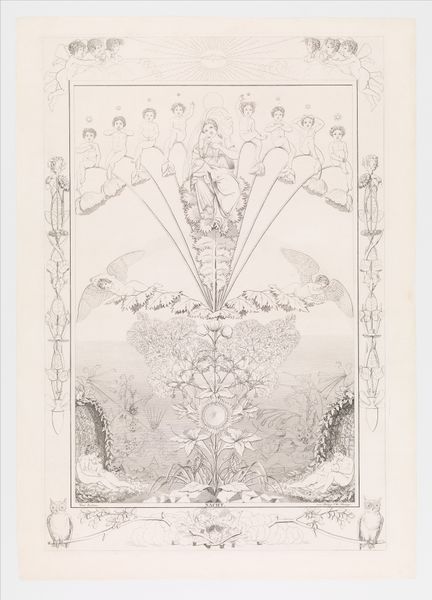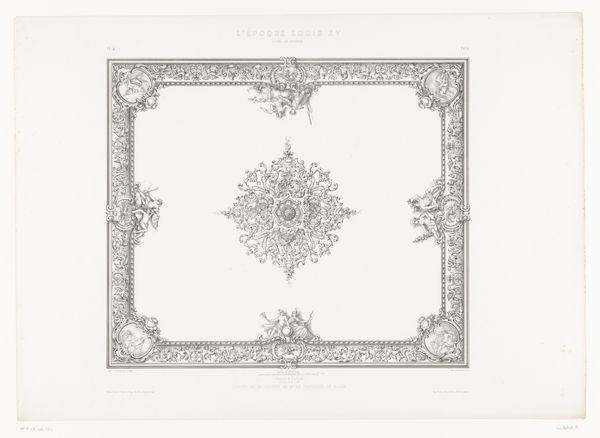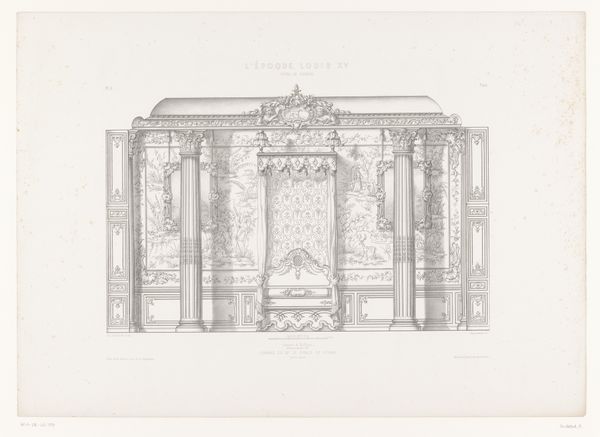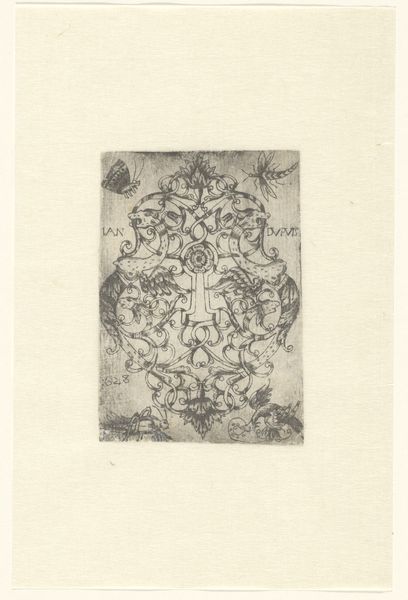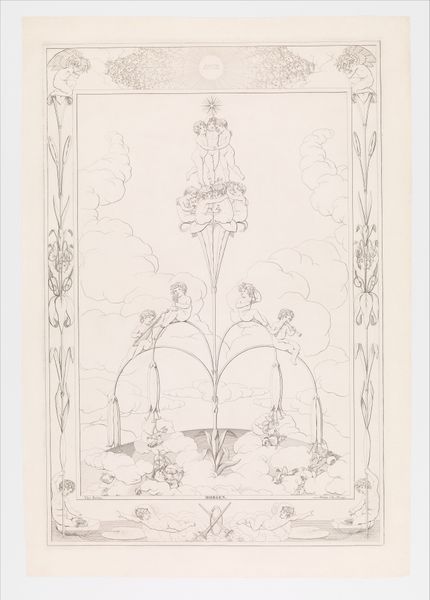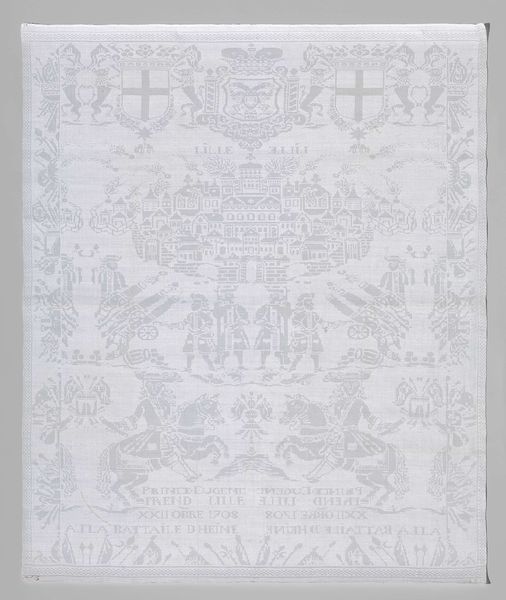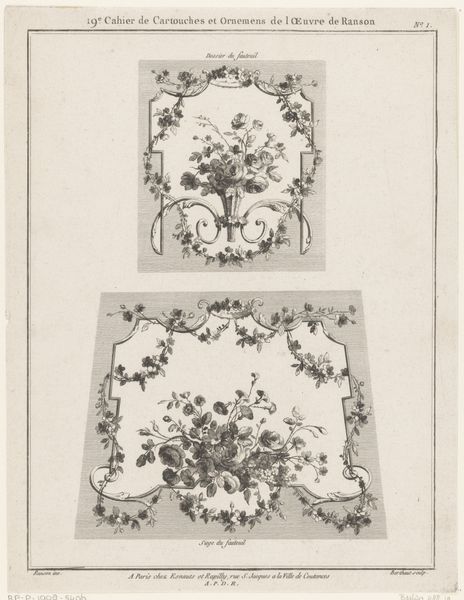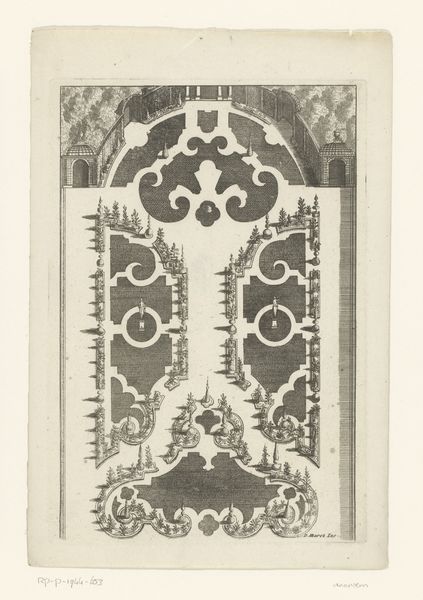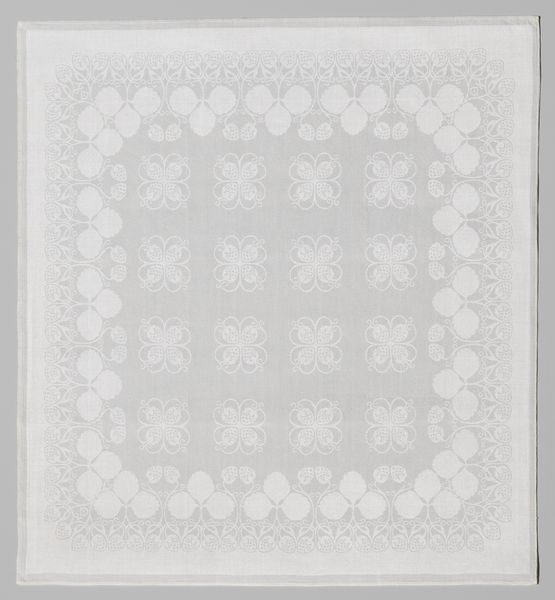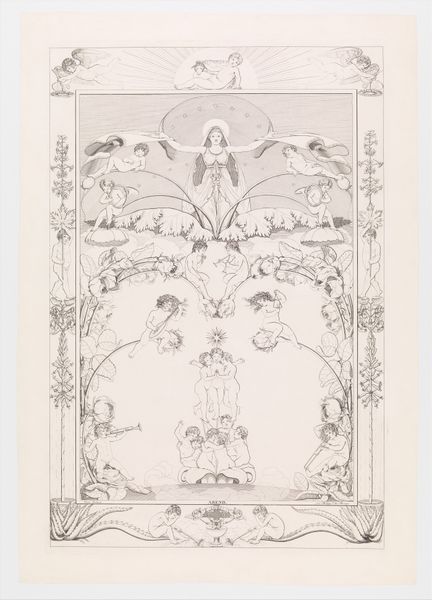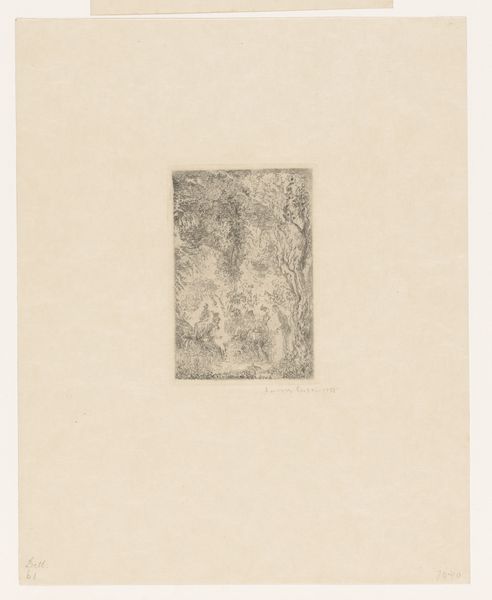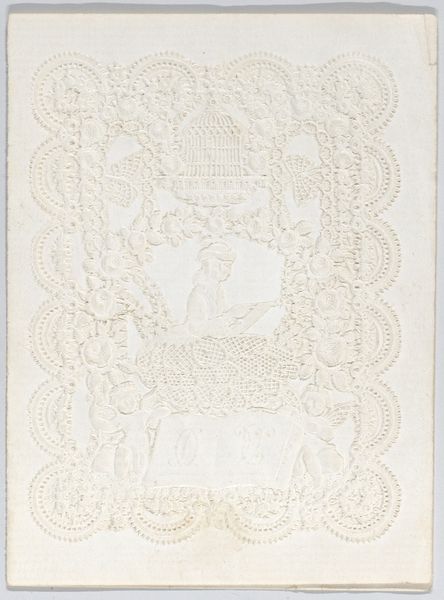
drawing, print, engraving
#
drawing
#
neoclacissism
# print
#
engraving
Dimensions: height 457 mm, width 632 mm
Copyright: Rijks Museum: Open Domain
Alphonse Guilletat made this print of the ceiling of the Prince de Rohan’s room in the Hôtel de Soubise. The Hôtel de Soubise, completed in the early 18th century, embodies the opulence and the aristocratic power that defined pre-revolutionary France. Commissioned by the Rohan family, whose lineage traced back to the medieval dukes of Brittany, the Hôtel de Soubise became a stage for their ambition and status. The architecture and decor were intended to awe visitors, reflecting the family’s claims to royal-like status. The Prince de Rohan’s room was one of the state rooms and would have been used to hold court, receive guests, and continue the performance of power expected of aristocrats at this time. The ceiling, with its elaborate ornamentation, served as a potent symbol of wealth. Consider how such spaces exclude and alienate those outside the aristocratic class. The Hôtel de Soubise stands as a testament to a society on the brink of upheaval.
Comments
No comments
Be the first to comment and join the conversation on the ultimate creative platform.
